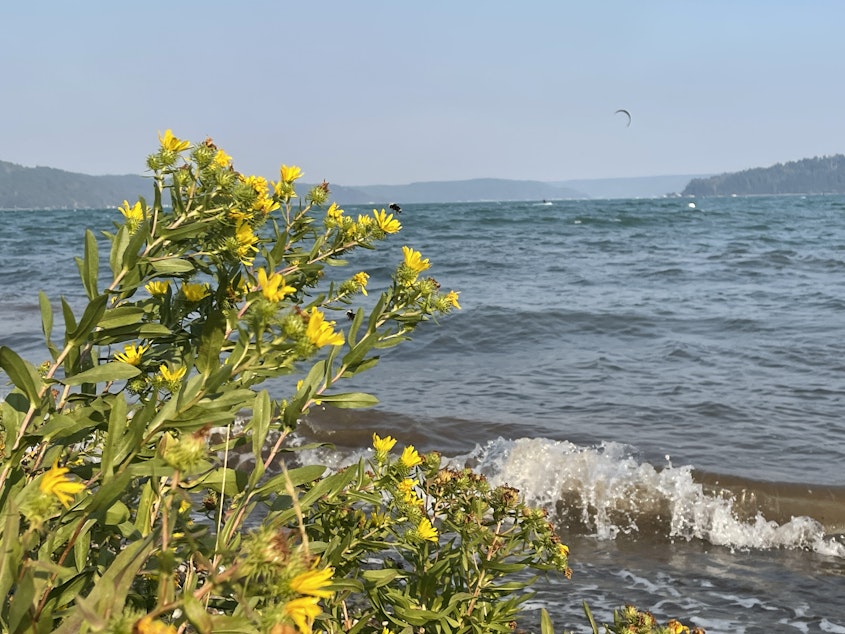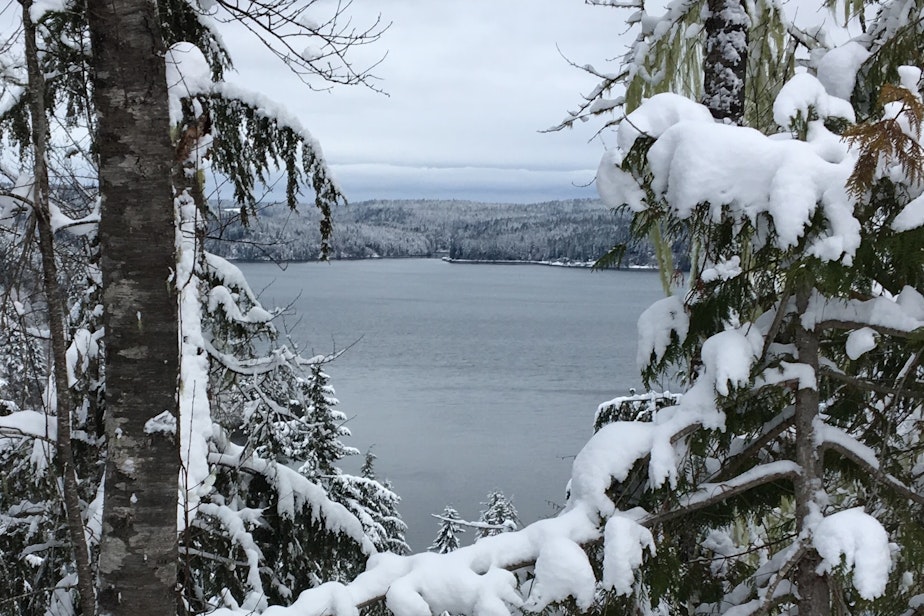Change the channel? New (or very old) name sought for Hood Canal

Hood Canal in Washington state isn’t a canal at all: It’s a 60-mile long fjord carved by Ice Age glaciers, not human beings.
As for the fjord's namesake, British Admiral and Lord Samuel Hood: He fought against the United States in the Revolutionary War and never visited the waterway (or the Oregon volcano and river) named for him.
A retired schoolteacher in Poulsbo wants to correct that two-centuries-old misnomer.
“It is a wonderful place, but it is NOT a canal,” Barbara Stark told the Poulsbo City Council on Feb. 1. Stark aims to convince the state board in charge of place names to dub the waterway “Salish Fjord.”
Stark said the word “fjord” is common in Poulsbo. The Kitsap Peninsula town is sometimes called “Little Norway on the Fjord” and is home to the Fjord Manor and Fjord Vista apartments, as well as “Fireworks on the Fjord” every July.
“We see it all over our lovely city, and it's my hope that we will see it on that beautiful, majestic waterway,” she said.
Sponsored
Like any town, Poulsbo, which sits near but not on Hood Canal, has no official say in deciding geographic names. That authority sits with the Washington Board on Geographic Names and the U.S. Board on Geographic Names.
“I’m a cranky, retired fourth-grade teacher with a red pencil,” Stark said. “What I really need from the council here is your endorsement and support, because that will really carry a lot of weight.”
Poulsbo’s mayor and city councilmembers were generally supportive of the argument that Hood Canal was a terrible name.
Some councilmembers were hesitant about the possible expense and disruption of a name change, and about Stark’s “Salish Fjord” suggestion.
“I think the surrounding Indian nations are absolutely critical to this,” councilmember Ed Stern said.
Sponsored
“They had something that they called it and I'd like to know what that was,” councilmember Britt Livdahl said. “I wouldn’t mind seeing it called ‘fjord’ as long as tribes signed off on it.”
"tuwaduq sidaqʷ"
Skokomish Tribe officials told KUOW they hadn’t heard of the proposal to change the name of the water body at the heart of their territory, and said they’ve had their own name for it for thousands of years: “tuwaduq sidaqʷ” [too-wah-duke SEE-dock].
“That's ‘the Twana people's saltwater,’” said Christie Chambless with the Skokomish tribal language department.
If you’ve hiked on or pondered a map of the east side of the Olympic Peninsula, you probably know at least a few words of tuwaduq or Twana, the language of the Skokomish Tribe. The Duckabush, Dosewallips, Hamma Hamma, and Skokomish rivers all bear Twana names, or at least anglicized approximations of them.

Sponsored
Before European contact, nine villages of tuwaduq or Twana people were scattered along the length of Hood Canal. Back before Washington became a state, the U.S. government, with the 1855 Treaty of Point No Point, forced them all onto the Skokomish Reservation at the southernmost point of the fishhook-shaped fjord.
“We were consolidated all onto this reservation,” said Skokomish Tribe CEO and tribal council vice chair Tom Strong.
Today, more than half the consolidated tribe’s 5,000-acre reservation is owned by non-tribal members, and its shared tuwaduq language is critically endangered, with no fluent speakers.
“Maybe 50 people out of our 800 tribal members can speak tuwaduq in one way or another,” said Chambless.
She teaches the language to tribal members, with the first in-person classes since 2017 set to resume in March.
Chambless spends a lot of time listening to old recordings of native speakers, some of them her own ancestors, to try to piece a nearly lost language back together.
In a wax cylinder recording from 1919, her great-grandfather Henry Allen sings a tuwaduq welcome song.
Sponsored
The Frog Song or Welcome Song
Henry Allen of the Skokomish Tribe sings "The Frog Song or Welcome Song" in the Twana language, recorded onto a wax cylinder by ethnologist Edward Curtis in 1919, then transferred onto reel-to-reel tape in 1954. Courtesy Christie Chambless, Skokomish Tribe Language Department.
Chambless said language revival efforts have advanced in fits and starts over the years.
“Having our elders shipped off to boarding schools back in the 1930s and before, that really played a part in sort of decimating our language,” Chambless said.
Sponsored
Chambless said at her first tuwaduq class in 2016, only she, her father, and her three children were in attendance.
Now she hopes to make tuwaduq instruction more lasting and widespread throughout the Hood Canal watershed.
“We have a responsibility to the schools in our traditional territory to help teach about our people, our tribal history, our tribal sovereignty, and our language,” she said.
Wherever they occur, culture and language are tightly intertwined.
Putting “tuwaduq” on the map could help heal the hurt from nearly losing that language and the culture it goes with, Chambless said.
Strong said the misnamed canal is the heart of Skokomish territory and culture.
“Traditionally, it was our highway. It was our byway. It was our food source. It was everything,” he said.
According to Strong, the Skokomish relationship with the water of Hood Canal, endangered by pollution that robs it of life-giving oxygen, is both long and deep.
Protecting Hood Canal is “part of our mission to our core and to our soul,” Strong said. “Because we know how goes the water, goes our people.”
Hood Canal is not the only “canal” named by British explorer George Vancouver, though he originally called it Hood’s Channel. Dramatic, steep-sided fjords of Southeast Alaska include Lynn Canal, Portland Canal (named for British aristocrat William Cavendish-Bentinck, 3rd Duke of Portland), and Seymour Canal.
“As a Native American, it's ironic to have things in America named after people who weren't from America,” Strong said. “So I've really had a hard time kind of wrapping my mind around that.”
The U.S. Board of Geographic Names officially changed the waterway's name from “Hood’s Canal” to “Hood Canal” in 1917, according to KIRO News. State legislators attempted to rename it "Hood Inlet" in 1947 and 1951, but both efforts failed.
Kris Miller, the Skokomish Tribe’s historic preservation officer, said she’d like to see the “tuwaduq sidaqʷ” name brought back to the tribe’s backyard fjord.
“Speaking as a tribal member, I would feel pride in that — that this is a step forward for the identity of our people,” Miller said.
“It's letting people know throughout the area whose territory they live in,” she said. “It’s our backyard.”




